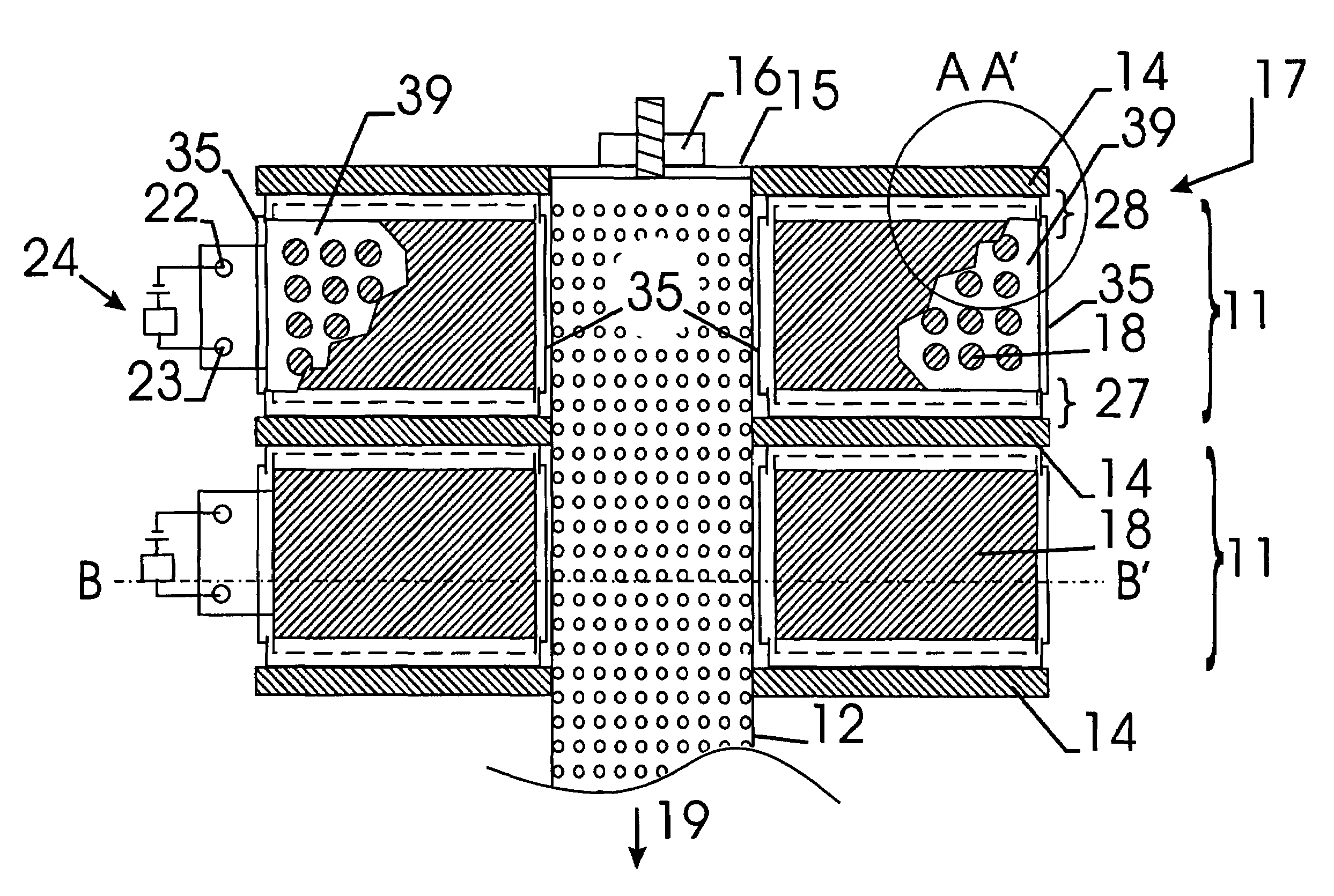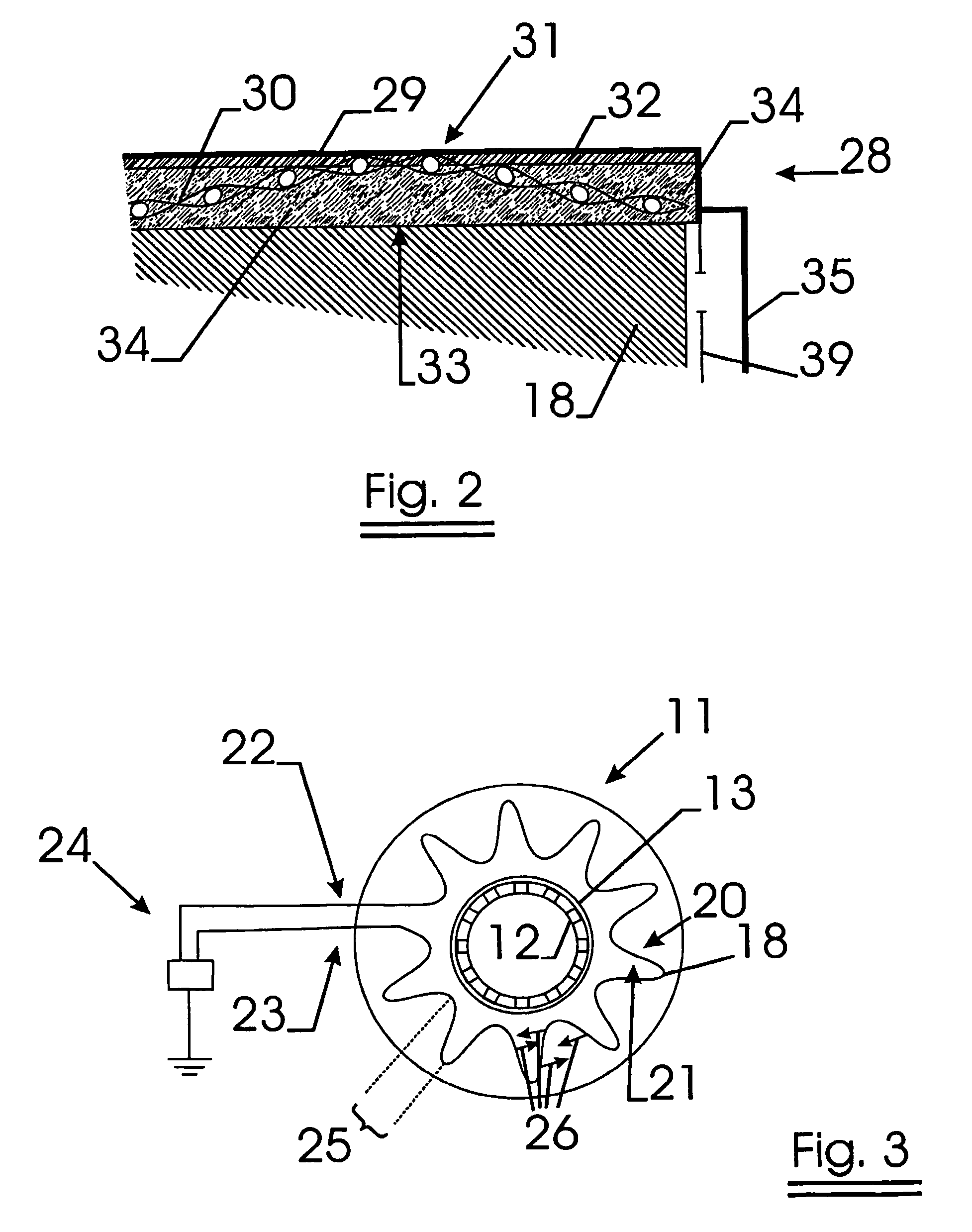Filter element
a filter element and filter element technology, applied in the field of filter elements, can solve the problems of filter element loss, most of the thermal energy obtained, filter element loss, etc., and achieve the effect of reducing convection heat loss and small movemen
- Summary
- Abstract
- Description
- Claims
- Application Information
AI Technical Summary
Benefits of technology
Problems solved by technology
Method used
Image
Examples
Embodiment Construction
[0062]A preferred filter unit as subject of the invention is shown in FIGS. 1, 2 and 3.
[0063]The filter unit comprises a number of filter elements 11, which are stacked one on top of the other. They all have a ring-like shape. A perforated metal tube 12 is positioned inside the inner opening 13 of the filter element. Between each filter element, a disc-like SiO2 felt material 14 is positioned to thermally insulate the different filter elements from each other. At both ends of the filter unit, a metal plate 15 is fixed against the upper and lower filter element e.g. as shown in FIG. 1 by means of a screw 16, which pushes the plate towards the filter element. Between this plate 15 and the upper or lower filter element, another disc-like SiO2 felt material 14 is positioned.
[0064]When this filter unit is used, preferably the gas to be filtered flows in from the outer side of the filter elements (indicated with arrow 17), through the filter medium 18 through the perforations of the metal...
PUM
| Property | Measurement | Unit |
|---|---|---|
| thickness | aaaaa | aaaaa |
| thickness | aaaaa | aaaaa |
| diameter | aaaaa | aaaaa |
Abstract
Description
Claims
Application Information
 Login to View More
Login to View More - R&D
- Intellectual Property
- Life Sciences
- Materials
- Tech Scout
- Unparalleled Data Quality
- Higher Quality Content
- 60% Fewer Hallucinations
Browse by: Latest US Patents, China's latest patents, Technical Efficacy Thesaurus, Application Domain, Technology Topic, Popular Technical Reports.
© 2025 PatSnap. All rights reserved.Legal|Privacy policy|Modern Slavery Act Transparency Statement|Sitemap|About US| Contact US: help@patsnap.com



